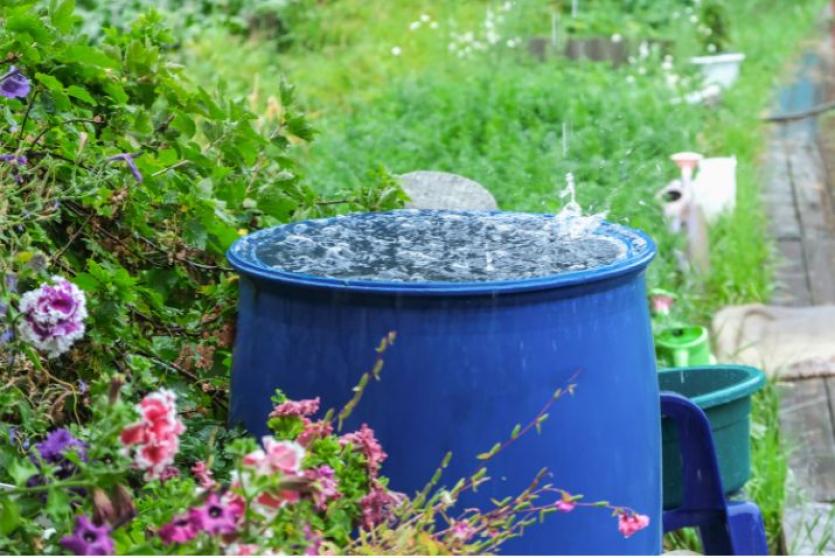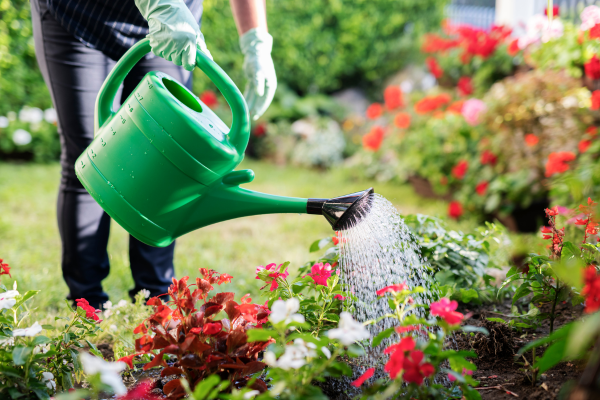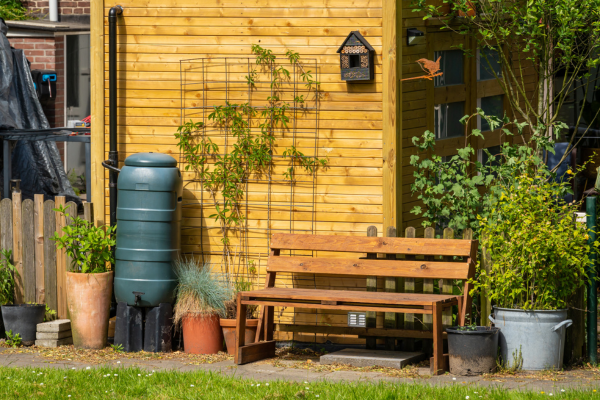Rainwater harvesting 101: How to use rainwater at home

Rainwater harvesting is an eco-friendly way to reduce water consumption, lower utility bills, and make your home more self-sufficient. According to the Environment Agency, each person in the UK uses in the region of 150 litres of quality drinking water every day, but about half of this amount doesn't need to be drinking water. Using a rainwater harvesting system at home helps conserve quality drinking water, can be a reliable water source during droughts, and can prevent flooding in severe weather.
How rainwater harvesting works
Rainwater harvesting involves collecting, storing, and using rainwater for various household needs. A rainwater harvesting system typically includes:
- A catchment area: Usually the roof, where the rainwater is collected.
- Gutters and downspouts: Channels that direct the water from the roof into storage tanks.
- Filtration system: Removes debris and contaminants from the water.
- Storage tank: Holds the collected rainwater for later use.
- Distribution system: Pumps or gravity-fed methods to deliver the harvested rainwater where needed.

Outdoor uses for harvested rainwater
There are plenty of ways you can use harvested rainwater outdoors to reduce your dependence on tap water. These include:
- Watering plants, lawns, and gardens (rainwater is actually better for plants than treated water because it's soft, slightly acidic, and free of harmful chemicals!)
- Cleaning outdoor surfaces such as patios and driveways.
- Car washing
- Filling swimming pools (must be properly filtered) or ponds
Indoor uses for harvested rainwater
There are several ways you can use harvested rainwater indoors at home too, although these will require potentially more advanced systems with good filtration and purification.
- Toilet flushing
- Laundry
- Drinking and cooking
- Bathing and dishwashing
Types of rainwater systems
- Above ground means the rainwater runs into barrels or other tanks.
- Underground means rainwater is filtered and pumped directly to be used by household appliances.
- Direct-pumped means a pump is located in a control unit within the house.

How much does a rainwater harvesting system cost?
The cost of a rainwater harvesting system really depends on storage capacity, filtration, and intended use.
A simple barrel or tank that collects rainwater from the roof via gutters can be around £50-£250 per barrel, depending on the barrel's capacity. This rainwater could only really be used for outdoor uses, and wouldn't be suitable for swimming pools.
For a fully integrated system that includes filtration, purification, and/or integration with household plumbing, the cost can vary greatly. It is likely to start at £4,000 minimum, and go up towards £16,000+, plus costs of professionals fitting this type of system would need to be factored in too.
Maintaining a rainwater harvesting system
Regular maintenance is key to keeping your rainwater harvesting system efficient, clean, and safe. Some of the key things to remember to do, include:
Clean gutters and downpipes – Remove leaves and debris every 3 months to prevent clogging.
Check and clean filters – Wash or replace pre-filters every 6 months to ensure good water quality.
Inspect storage tanks – Look for algae, sediment buildup, or cracks once a year.
Check pumps and pumps for leaks – Ensure there’s no water wastage or damage to fittings.
Rainwater being used for drinking should be tested annually, and ideally bi-annually, with UV filters being replaced as soon as needed.
Is rainwater harvesting legal in the UK?
Rainwater harvesting is fully legal in the UK and encouraged as a sustainable water management practice. However, there are some guidelines to follow:
- Planning permission: In most cases, installing a rainwater harvesting system does not require planning permission. However, for larger underground tanks or extensive modifications to your home, it's best to check with your local council.
- Speak to water supplier: If your system is connected to the mains water supply (e.g., a backup system for when rainwater is unavailable), you may need approval from your local water provider to ensure proper backflow prevention.
- Building regulations compliance: If the harvested water is used indoors (e.g., flushing toilets, washing machines), the system must comply with Part G of the Building Regulations, ensuring no contamination risks. This isn't required if using the rainwater for outdoor use only.
- Drinking or bathing: Strict filtration and disinfection methods (such as UV purification and reverse osmosis) are required if you wish to use rainwater for these. The system must comply with the Water Supply (Water Quality) Regulations 2016 and BS 8515:2009 – British Standard for Rainwater Harvesting.
Rainwater harvesting is an effective and sustainable way to make the most of a free natural resource. Whether for outdoor use or indoor applications, integrating a rainwater collection system can save money and reduce environmental impact.
Looking for advice?
If you're looking to let or sell your property, we can help. Get in touch with your local branch or book in for a property valuation.

Contact Us
Got a question, general enquiry or something else?
You may also like
Since we started in 1987 we have grown to one of the UK’s largest property groups, we can save you time and money by offering a range of services and expertise under one roof.



